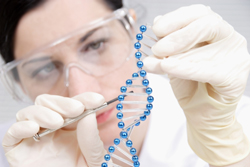Faster methods for better health and disease management
Faster and more cost-effective DNA sequencing platforms are called for as the medical community strives for improved methods of disease diagnosis, treatment and prevention. To better understand the structure and functioning of the human genome, more complete datasets are needed. These will be able to identify the minor variations among individuals that have been associated with varying diseases and drug treatment responses. Sequencing methods currently available are costly and thus limit the amount of data that can be generated for investigating the genetics of human health and disease. This leaves a gap in the need to determine rare differences and access long-range information. Fast and cost-effective sequencing tools will help medical researchers and practitioners - and ultimately patients - by offering improved diagnosis, containment and treatment. The 'Array based sequencing-by-synthesis' (ARRAYSBS) project aimed to develop methods and components for a sequencing-by-synthesis approach that would meet these demands. The EU-funded project brought together numerous small and medium-sized enterprises (SMEs) and experts with a vision to commercialising successful outcomes by developing a fully functional and marketable product. Researchers studied DNA primer properties and their influence on primer extension microarrays, analysing experimental data from genotyping microarrays. Results were compared with those generated from the developed sequencing-by-synthesis platform. Using advanced statistical methods, primer properties were evaluated to determine which play a role in strong fluorescent signal and low failure rate. Results of these tests enabled the development of statistical models to be used for predicting call rate and signal intensities of extension primers on microarrays. A microarray normalisation method effective in reducing variation between microarrays was also developed. Project partners created a web-based prototype for the automatic design of re-sequencing primers with strong signal and low failure rates; the prototype was then adapted for re-sequencing and various tests were performed to reveal the most appropriate algorithm for genotyping.

